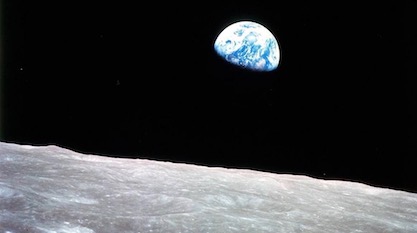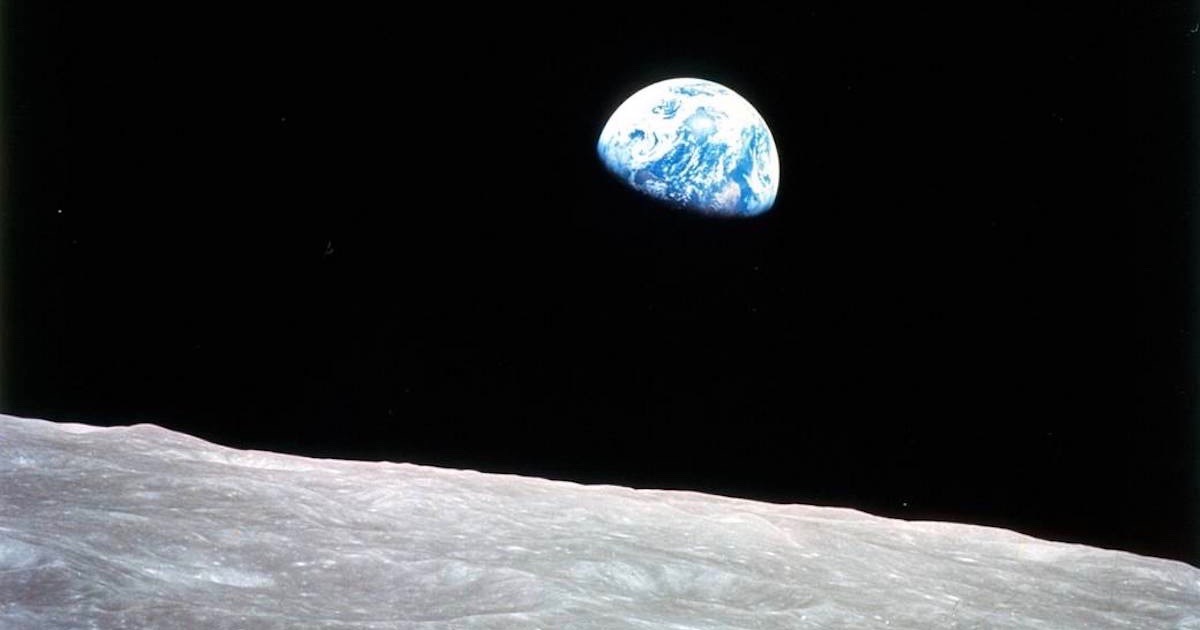 Physics, Earth & Space
Physics, Earth & Space
Apollo 8 and Intelligent Design, Then and Now


Public violence, politically motivated and otherwise, is a common occurrence. Sports figures stage public protests against racism. Women rally against exploitation and abuse. Young people push for radical cultural and social changes. Belief in God is declining. Americans are deeply and bitterly divided.
These summary headlines certainly describe 2018, but they would just as well apply to 1968. To be sure, 2018 also has its share of positive headlines. The economy is booming. Unemployment levels are at historic lows. Our country is no longer energy-starved. And, death rates from abortion and cancer have hit historic lows, to name a few.
As 1968 came to a close, one event did bring people together not only in America but also around the globe — Apollo 8. Apollo 8 was notable for several reasons. It was the first manned mission to the Moon (setting the stage for a landing less than a year later). It was the first time humans viewed Earth completely as a sphere as well as the far side of the Moon. And, it proved that the barely tested Saturn V could do the job of sending men to the Moon and bringing them back home safely.
Earthrise
Apollo 8 was launched on December 21, and its three-man crew made several rounds of the Moon three days later. What we most remember about astronauts Frank Borman, Jim Lovell, and Bill Anders, however, is what they did on that Christmas Eve. Emerging from the Moon’s far side during their fourth orbit, they were mesmerized by their vision of Earth, a delicate, gleaming swirl of blue and white, contrasting with the barren lunar horizon — the famous Earthrise picture above. Earth had never appeared so small to human eyes, yet was never more the center of attention.
To mark the event’s significance, the crew had decided, after much deliberation, to read the first ten verses from Genesis. Borman’s final statement on the broadcast was, “And from the crew of Apollo 8, we close with good night, good luck, a Merry Christmas and God bless all of you — all of you on the good Earth.” The reading, and the reverent silence that followed, went out over a live telecast to an estimated one billion viewers, the largest single audience in television history until that time.
In his book about the Apollo 8 mission, Genesis: The Story of Apollo 8: The First Manned Mission to Another World, Robert Zimmerman notes that the astronauts had not chosen the words as parochial religious expression but rather “to include the feelings and beliefs of as many people as possible.” Indeed, when the majority of Earth’s citizens look out at the wonders of nature or Apollo 8’s awe-inspiring Earthrise image, they see the majesty of a grand design. But a very different opinion holds that our Earthly existence is not only rather ordinary but in fact insignificant and purposeless.
Effects on the Crew
Few know of the mission’s long-term effects on its three crewmen. For Frank Borman and Jim Lovell, seeing the distant Earth from lunar orbit strengthened their conviction that human beings existed for a purpose. From a quarter million miles away, Lovell told the world on Christmas Eve, 1968: “The earth from here is a grand oasis in the big vastness of space.” For Bill Anders, however, who took the Earthrise photo, this same view had the opposite effect. The Earth, so tiny and isolated within the cold emptiness of space, suggested a lonely purposelessness. Having abandoned the Catholic rituals that he had once held dear, he later described his vague impression that had begun in lunar orbit: “We’re like ants on a log.”
Even in a crew of three, two opposing interpretations of the world emerged. For some, like Anders, we exist for no purpose. For others, Earth is a precious jewel in the rough. Its broader context helps reveal its design.
A Return to the Moon?
Apollo 8 did bring our splintered country together for a while, but 50 years later we are more divided than ever. Perhaps another big NASA project, like a return to the Moon, will bring us back together again. But, it will also be short-lived. Our deepest divisions, no doubt, stem from how we view our place in the cosmos. As long as we disagree on this question, we will disagree on many other downstream questions.
There is one big difference between 1968 and today. Simply stated, there is much more evidence for intelligent design today, from cosmic fine-tuning and a cosmic beginning to the digital code in DNA and molecular machines. Some (especially those who hold the reins of power) continue to reject the evidence. However, we have hope that the dam of censorship will break, and that more people will give up their blinders.
Photo credit: NASA.
